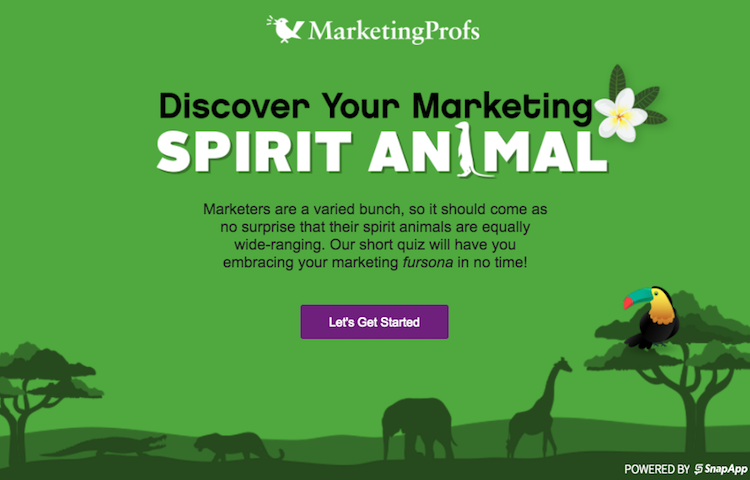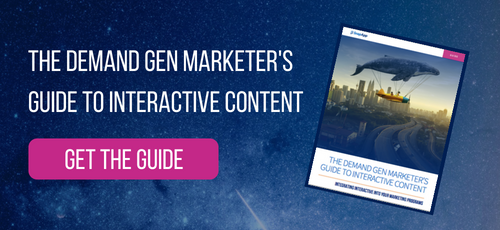When your non-marketing friends are asked to describe what they think of when they hear marketing, most of them will describe flashy billboards, the direct mail campaigns that overflow their mailboxes, and the promotional emails that pack their personal email inbox.
But what they don’t know is that most of what they are thinking of when they think about marketing in general actually falls under the category that us savvy marketers would call demand generation marketing.
What is Demand Generation Marketing?
Demand generation marketing is the collection of activities marketers use to drive brand awareness, nurture leads, and power the acquisition of new customers through what we traditionally think of as marketing.
But demand generation marketing doesn’t end at brand awareness activities — demand generation efforts are also important to help move your prospects down the marketing funnel, as they make longer and more complex purchase decisions, like are common in the B2B space.
But regardless of what stage of the buyer journey, or process your prospects undertake to get from awareness of your brand to ultimate purchase, you are thinking about demand generation marketing efforts for, successful marketers also carefully consider how to utilize its partner in crime: content.
Targeted content powers demand generation efforts, delivering value to leads that have signed up for your various demand generation activities, like webinars and blogs. But as buyers today become increasingly self-sufficient, with 91% of millennial buyers avoiding interacting with sales people until the middle or end of their buying journey.
To compensate for the extra time buyers now spend independently researching instead of being led skillfully down the marketing funnel by a salesperson, your content and demand efforts need to work overtime — which is why many marketers are turning to interactive content to power their modern demand generation efforts.
How does interactive content support demand generation?
Interactive content requires active engagement from your audience, meaning you get more insights about them than with traditional static content. When you think about interactive content probably the first thing that comes to your mind are Buzzfeed quizzes that promise to help you FINALLY get to the bottom of what Disney Princess you are at your core.
But interactive content also provides marketers with the opportunity to ask key sales qualifying questions that will help you qualify your leads without sending them to your sales team to cold call before they are ready to have a sales-led conversation.
But this new content type doesn’t mean you have to change your whole marketing plan — instead think about using interactive content to supercharge the demand generation efforts you are already doing.
Let’s look at a few common examples:
Webinars
Webinars are a go-to tool for demand generation marketers working to drive brand awareness and also get new leads engaged with their content. But webinars also require a lot of planning and prep work for an activity where on average, only 20% of your registrants will attend.
Interactive content provides an opportunity for a win-win for you and your potential webinar audience: let them set your webinar agenda!
Database Activation Campaigns
Maybe you recently purchased a list, maybe you’re looking to reactivate a dormant section of your database, maybe you’re just running a regular campaign or newsletter. Either way, just blasting names with irrelevant, generic content won’t help you and your sales team focus on the right leads who may be ready to become your next customer.
With interactive content, you can directly ask the qualifying questions that determine if these names are truly worth resource investment, and what the best next steps are.
Events
Marketers often spend a disproportionate amount of their demand generation marketing budget on events, and with good reason — they can be super effective at generating buzz and new leads for your brand. But the effort required to drive traffic to your event booth and sort through the hundreds of names you collect after a show to know which new names to focus on.
But by using interactive content, marketers can both generate booth traffic and engagement as well as swap generic emails follow up for personalized, relationship-building content.
Marketingprofs did both of these by designing an in-booth quiz that got their audience excited about what their marketing spirit animal was.
Not only did the quiz make conversations more fun at their event booth, whether you were the Lead Gen Giraffe or the Email Elephant, Marketingprofs hosted a webinar with content dedicated to the interest of each animal result!
Final Thoughts
Well I hope I’ve convinced you that as the old adage goes, good things do come in pairs — peanut butter and jelly, Bey & Jay, and now interactive content and demand generation.
By supercharging your demand generation efforts with interactive content you can make your existing marketing activities work harder for you as you allow your leads to self-qualify.
Want to learn more about how interactive content and demand generation work together? Get our guide!


